Galaxy A56 vs OnePlus 13R: All the differences compared
We may earn a commission if you make a purchase from the links on this page.

Intro
After a brief hiatus, Samsung is finally ready to reassert some presence on the US mid-range market with its fresh new Galaxy A56. The has arrived to the US with a $500 price tag, clashing with the iPhone 16e and the upcoming Pixel 9a.
How does it fare against a more exotic offering, though, one like the OnePlus 13R?
We will look at the main differences between the two phones, but also their similarities. The A56 is a pretty good bang for your buck, just like its predecessors, but it might leave some disappointed with the lack of substantial upgrades.
Galaxy A56 vs OnePlus 13R differences:
| Galaxy A56 | OnePlus 13R |
|---|---|
| More understated design with flat sides and curved corners | Sticks out a little more because of the large circular camera module |
| Slightly smaller 6.7-inch display | Slightly larger 6.8-inch screeen |
| 1,200 nits peak brightness | Higher brightness |
| 8GB RAM | 12GB RAM |
| Six years of software support | Four years of software support |
| Weaker Exynos 1580 (4nm) chipset | Significantly faster Snapdragon 8 Gen 3 chipset (4nm) |
| Main, ultra-wide and macro cameras | Has a 2x telephoto camera instead of a macro (more useful) |
| Fast 45W wired charging and no wireless charging | Even faster 80W wired charging with charger included in the box; also no wireless charging |
| $499 | $599 |
Table of Contents:
Read more:
- Samsung Galaxy A56 vs A55 vs A54: Breaking down the evolution in Samsung’s mid-range series
- Samsung Galaxy A56 vs Galaxy A36 preview: Almost the same phone
- OnePlus 13R review: The best flagship-killer from OnePlus is here
Design and Display Quality
The OnePlus 13R is less durable, but has a much better display
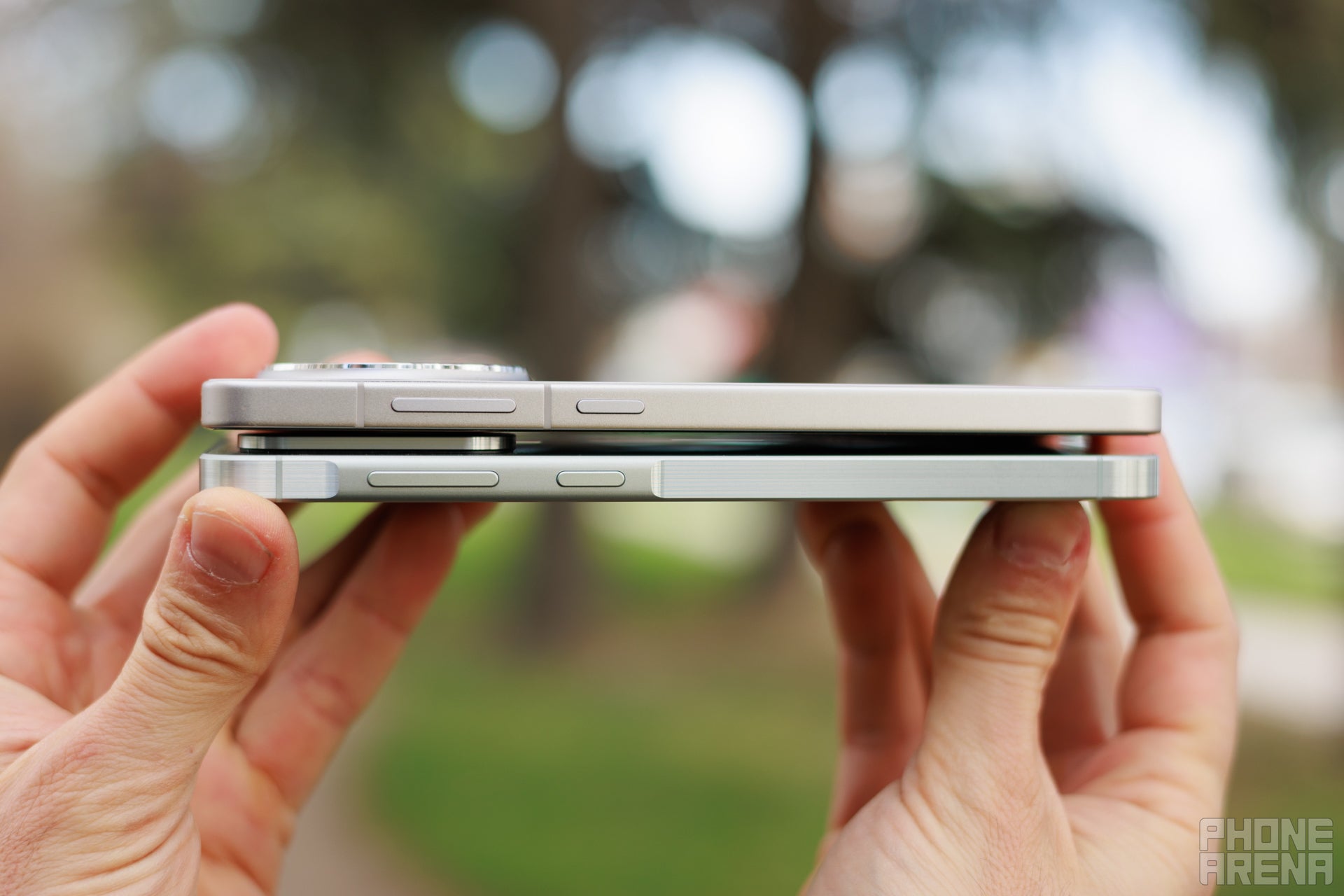
Image by PhoneArena
The Galaxy A56 is similar in size to its predecessor and still utilizes an aluminum design that is slightly more upscale than the plastic Galaxy A36. Standing at 162.2 x 77.5 x 7.4 mm versus the OnePlus 13R's 161.72 x 75.77 x 8.09 mm, it's the Galaxy that's taller and wider, but slightly thinner. Samsung's phone is also a little lighter at 195gr.
The glass used on both phones is different. The Galaxy comes with Gorilla Glass Victus, which should be more durable compared to the Gorilla Glass 7i on the 13R.
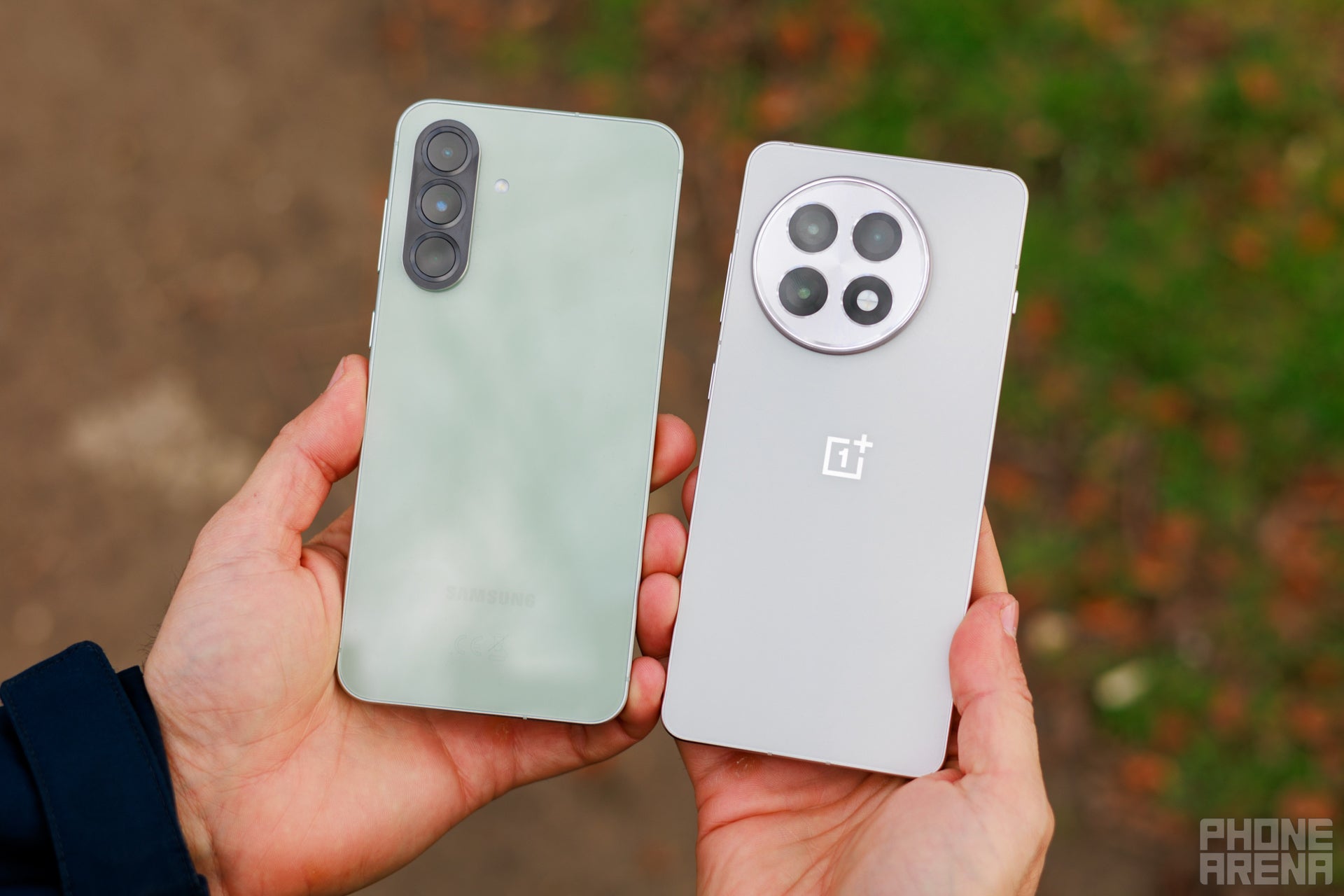
Image by PhoneArena
Looks-wise, it really comes down to personal opinion. Both phones are nice in their own right. The A56 has a revamped camera module, switching to a vertical elongated bar housing all three cameras instead of three individually protruding lenses.
In comparison, the OnePlus comes with a design that is more akin to what we are seeing from Chinese phone manufacturers, featuring a circular camera module that sticks out.
Something worth mentioning in the unboxing experience is that you get an 80W charger with the OnePlus 13R. Since Samsung hasn't included a charger with its phones for ages now, we don't expect that to be the case with the A56, even though it boasts much faster 45W wired charging speeds.
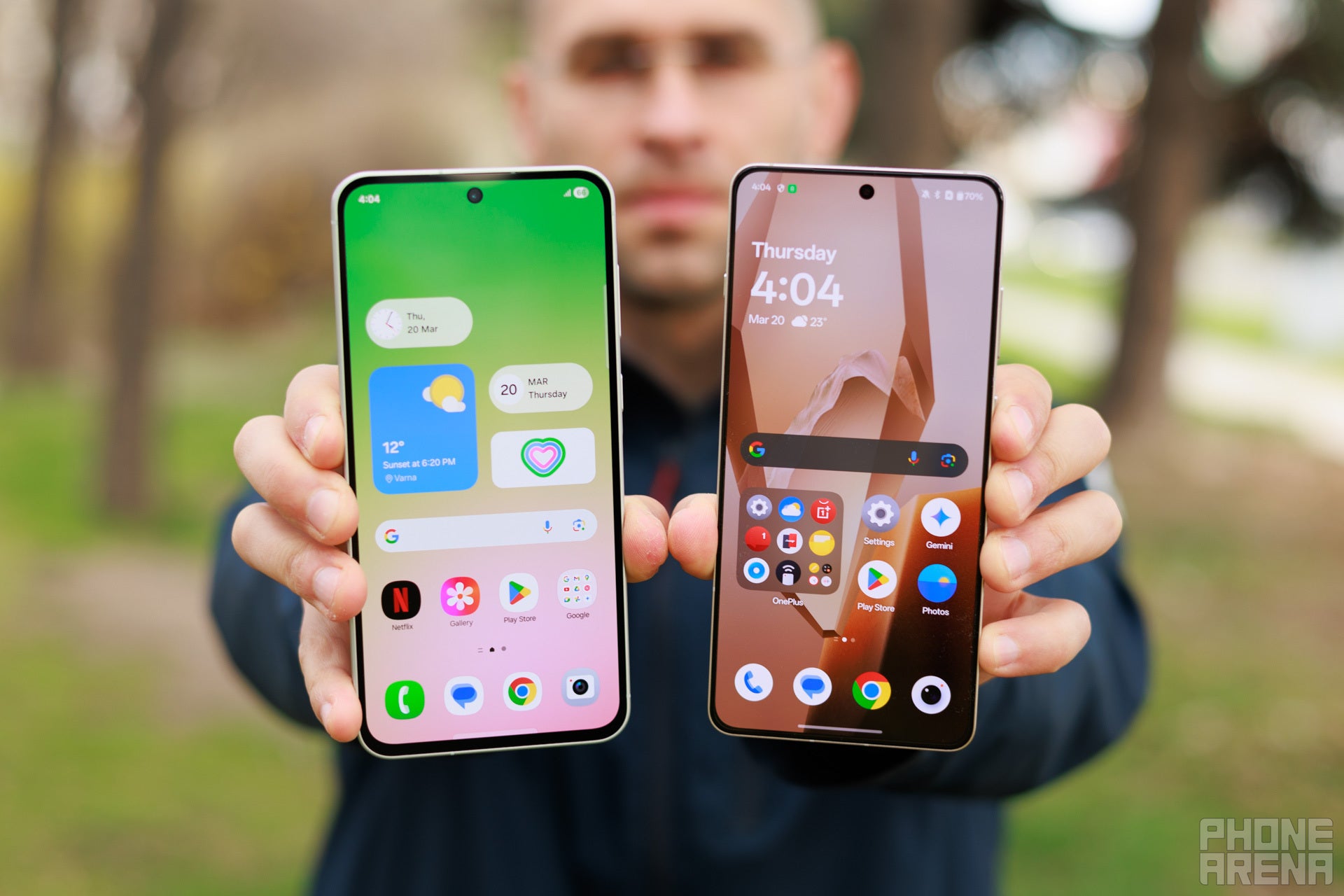
Image by PhoneArena
Display technology is one area where Samsung definitely excels at, but that's mostly when it comes to its more premium phone models.
The Galaxy A56 comes with a 6.7-inch Super AMOLED screen with up to 120Hz refresh rate and 1,200 nits of peak brightness. Great for the mid-range segment, that's for sure.
Meanwhile, the OnePlus 13R has a gorgeous display that is not only higher resolution, but also comes with higher brightness levels, way above the 1,200 nits advertised by Samsung.
The battle for which display is more capable is not even a close one. Our display tests make that clear as day, with the 13R achieving considerably higher brightness levels at 20% APL.
Performance and Software
More money gets you more power, like usual
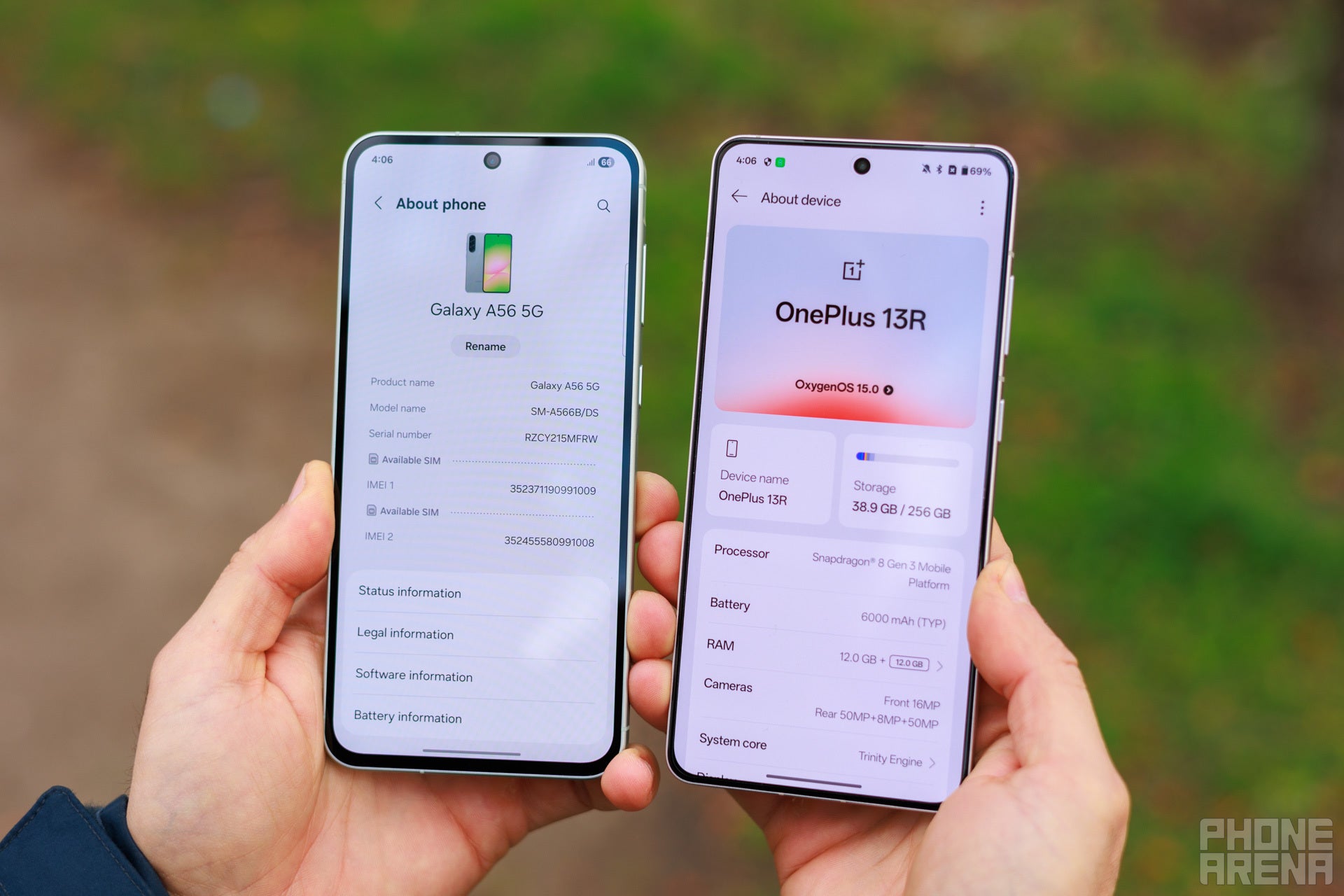
Image by PhoneArena
The chipset is one of the most, if not the most, expensive parts in a phone. That's why when manufacturers want to keep the price low they tend to downgrade that part first, although there are exceptions.
OnePlus has a history of delivering high-end performance in more affordable phones, and that is still true with the OnePlus 13R. Still, the 13R costs considerably more than what we expect the A56 to go for once it hits the market, and a large part to play in that is its flagship-level processor, the Snapdragon 8 Gen 3.
In contrast, the Galaxy A56 comes with the Exynos 1580, the latest version of Samsung's mid-range chipsets. On the other hand, the 13R comes with the more powerful Snapdragon 8 Gen 3 flagship chip.
On the 13R you also get 12 GB of RAM vs the 8 GB on the a56.
The Galaxy A56 comes with a significantly better chipset than its predecessor, but no matter how improved it is, it simply cannot match a flagship one. We clearly see that when we place next to the 13R and its Snapdragon 8 Gen 3 chip, which achieves double to performance, and even more when it comes to graphical performance.
OnePlus has also invested into something called Parallel Processing with the latest version of its Oxygen OS software. Put simply, this makes animations happen without any delay and makes the user experience even smoother.
The Galaxy A56 comes with Awesome Intelligence, which is Samsung's AI solution for the mid-range market. It comes with features like Best Face, Object Eraser, and Circle to Search, among others (13R has Circle to Search too).
One area where Samsung definitely wins, however, is with its software support. OnePlus has improved on this and has promised four years of OS updates for the 13R. At the same time, the Galaxy A56 will be supported for up to six years.
Camera
Samsung needs to get with the program
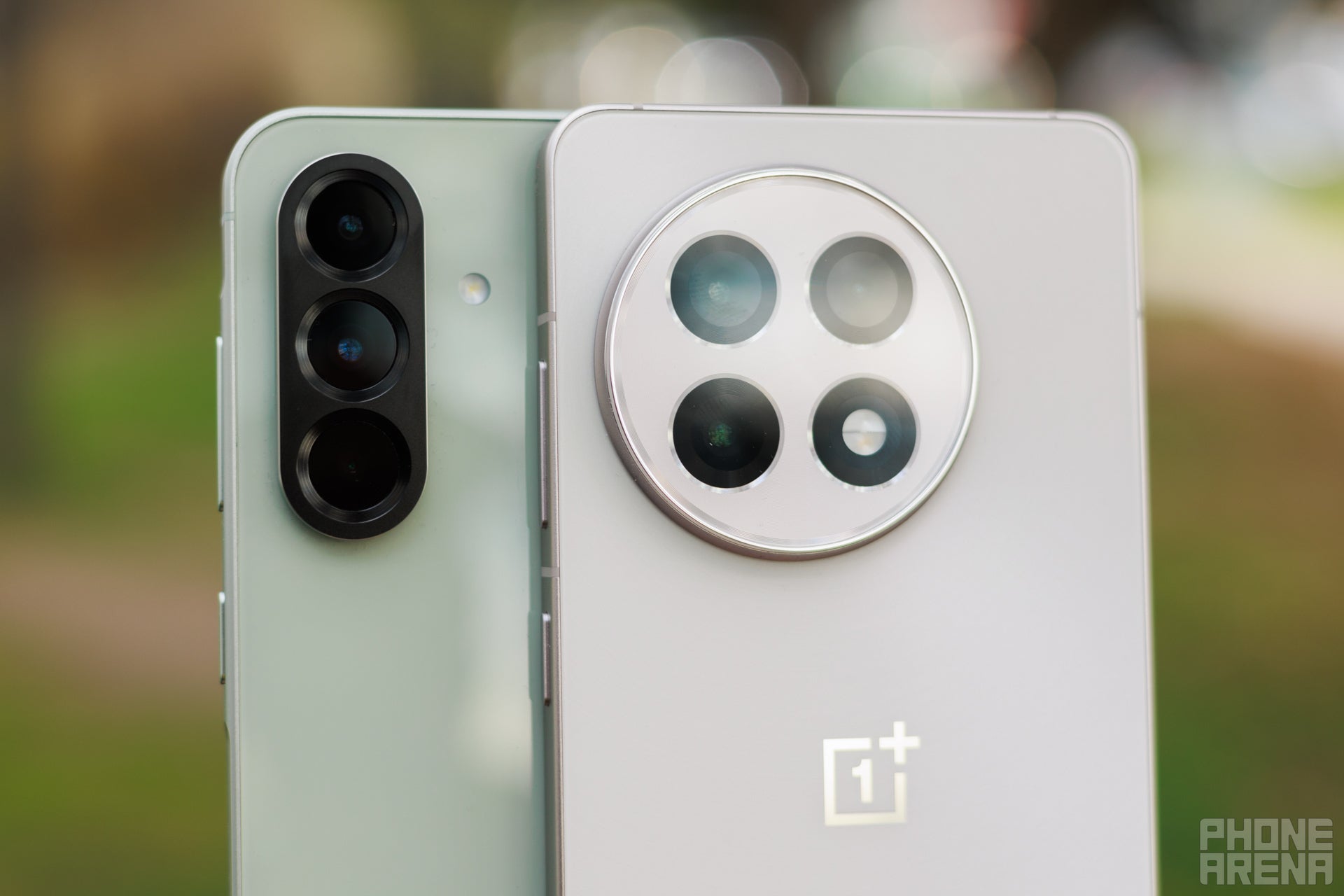
Image by PhoneArena
For a mid-range phone, the OnePlus 13R's camera system showcased solid performance during our camera test and in real life during our review. One of the best parts about it was that OnePlus decided to drop the macro camera for a 2x telephoto one, which immediately boosted zoom quality. The main camera is also one of the best we have tested on a device at this price point.
Unfortunately, Samsung hasn't ditched the macro camera on the Galaxy A56. This already puts it behind the 13R as far as camera versatility goes. The Samsung phone comes with a 50MP main, 12MP ultrawide, and a 5MP macro. There's a new 12MP front-camera, though. Given that the A55 front camera already performed slightly better in our tests compared to that of the 13R, we expect the new selfie snapper to be even better.
PhoneArena Camera Score:
The OnePlus 13R pulls ahead in our camera lab tests mainly thanks to its main and telephoto cameras. The A56 takes a hit here because it lacks a dedicated zoom snapper.
Sample Photos
The OnePlus 13r does a better job at exposing the image with a less aggressive contrast, but the Galaxy's colors are more true to life, so it depends on what's more important for you.
Video Quality

The OnePlus 13R seems to do a much better job at adjusting for different lighting conditions during video recording. But we prefer the way the Galaxy handles colors, as the image looks much more natural compared to that from the 13R.
The A56 also has a weird gitter when the phone is moving too much, while the image stabilization on the OnePlus keeps the image smooth.
Lastly, the downside of the OnePlus is that you cannot switch from the main to the ultra-wide camera, unlike on the A56.
Battery Life and Charging
A big step for Samsung's mid-ranger, but still not big enough to catch up
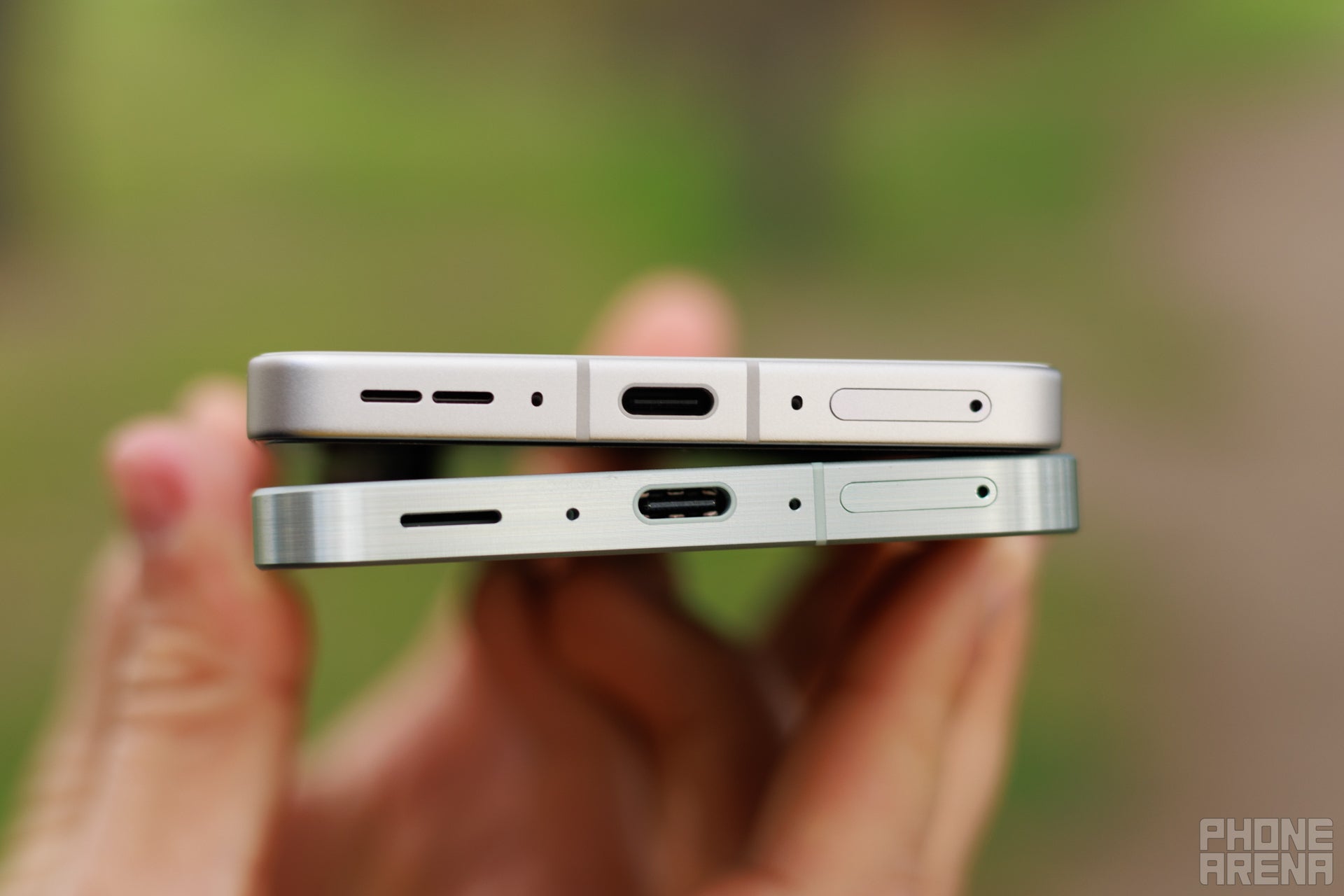
Image by PhoneArena
The OnePlus 13R comes with a 6,000 mAh silicon-carbon battery that helps the phone last quite a bit longer than its competition. In our testing, it got an estimated 7 hours and 22 minutes of battery life. That's more than the 7 hours and 3 minutes the Galaxy A56 got, but not by much, considering the battery size difference.
PhoneArena Battery and Charging Test Results:
As for charging, this is where things get interesting. Samsung has made a pretty big move with the Galaxy A56, giving it 45W of fast wired charging, the same speeds that the Galaxy Ultra models are capable of.
But even with those 45W, the Galaxy A56 still has a tough time matching the 80W that the OnePlus 13R is capable of. But, again, the difference is small—since the battery is smaller on the A56, it needs less time to juice it up, which compensates for its slower charging speeds.
Wireless charging one thing that we sorely missed with the 13R, and sadly the A56 does not feature it either.
Specs Comparison
Here's a quick overview of the two spec sheets, but if you want a more detailed look, check out our Galaxy A56 vs OnePlus 13R specs page.
| Galaxy A56 | OnePlus 13R |
|---|---|
| Size, weight 162.2 x 77.5 x 7.4 mm, 198 gr | Size, weight 161.7 x 75.8 x 8 mm, 206 gr |
| Screen 6.7" OLED 120Hz refresh rate 1200 nits peak brightness | Screen 6.78" OLED 120Hz refresh rate 4500 nits peak brightness |
| Processor Exynos 1580 4nm | Processor Snapdragon 8 Gen 3 4nm |
| Versions: 8GB/128GB 8GB/256GB LPDDR5 | Versions: 12/256GB LPDDR5X |
| Cameras: 50MP main 12MP ultra 5MP macro 12MP front | Cameras: 50 MP main 8 MP ultra 50 MP 2X zoom 16 MP front |
| Battery: 5000 mAh | Battery: 6000 mAh |
| Charging: USB-C 45W wired No wireless | Charging: USB-C 80W wired No wireless |
The OnePlus 13R seems to be the much better equipped device as far as specs go. With just a quick glance at the spec sheets above, the more powerful chipset, telephoto camera (instead of a useless macro), and the even faster charging speed already make it stand out. Then again, the 13R does cost a lot more at $599 compared to the $499 price for the A56 in the US, making it a slightly more appealing purchase.
Also read:
Which one should you buy?
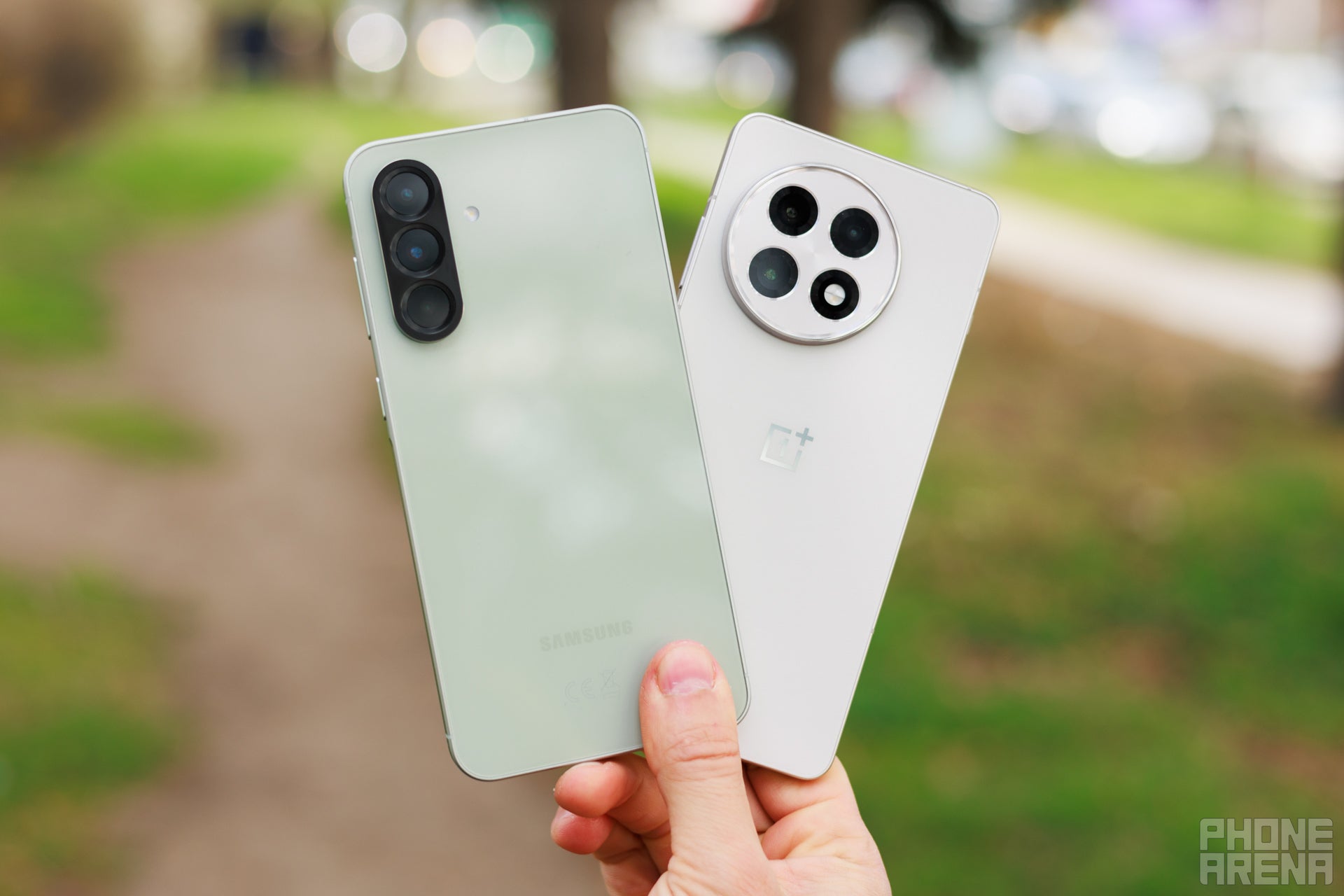
Image by PhoneArena
Samsung is definitely taking a step in the right direction by giving the Galaxy A56 that faster 45W charging as well as Awesome Intelligence features and long software support. The phone is what it always has been—a great all-rounder for a good price. It covers all the basics pretty well, enough to satisfy most people.
The OnePlus 13R might be a bit pricier, but that's because it throws in enough goodies to make you forget that you don't have a flagship phone. Whether the "extra" it includes adds more value, well, that is determined on an individual level.
But if you can afford it, the 13R has a better chance of making a happy buyer out of you than what the A56.
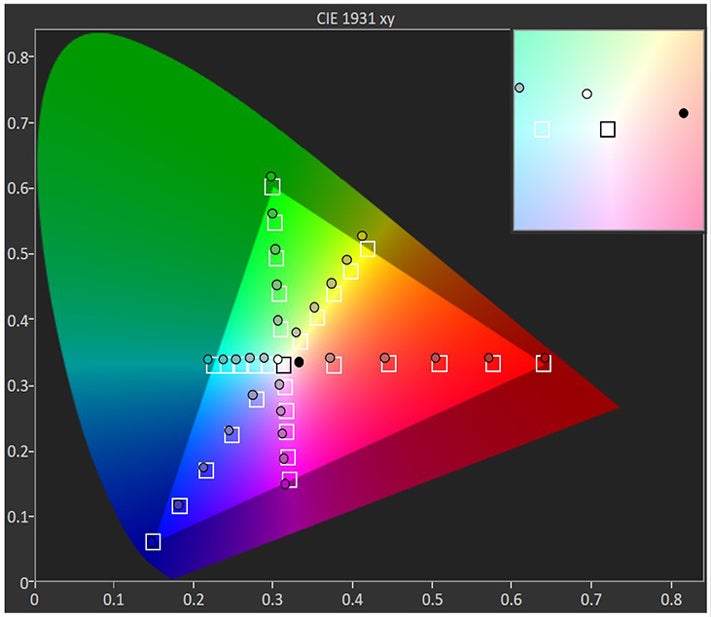










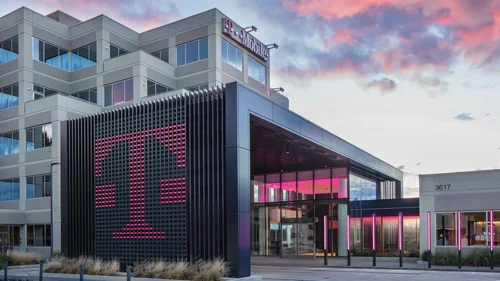




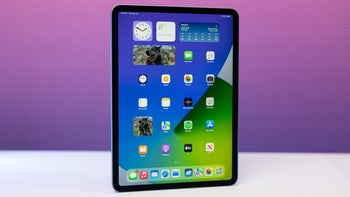






Things that are NOT allowed: